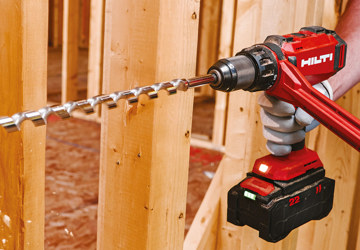
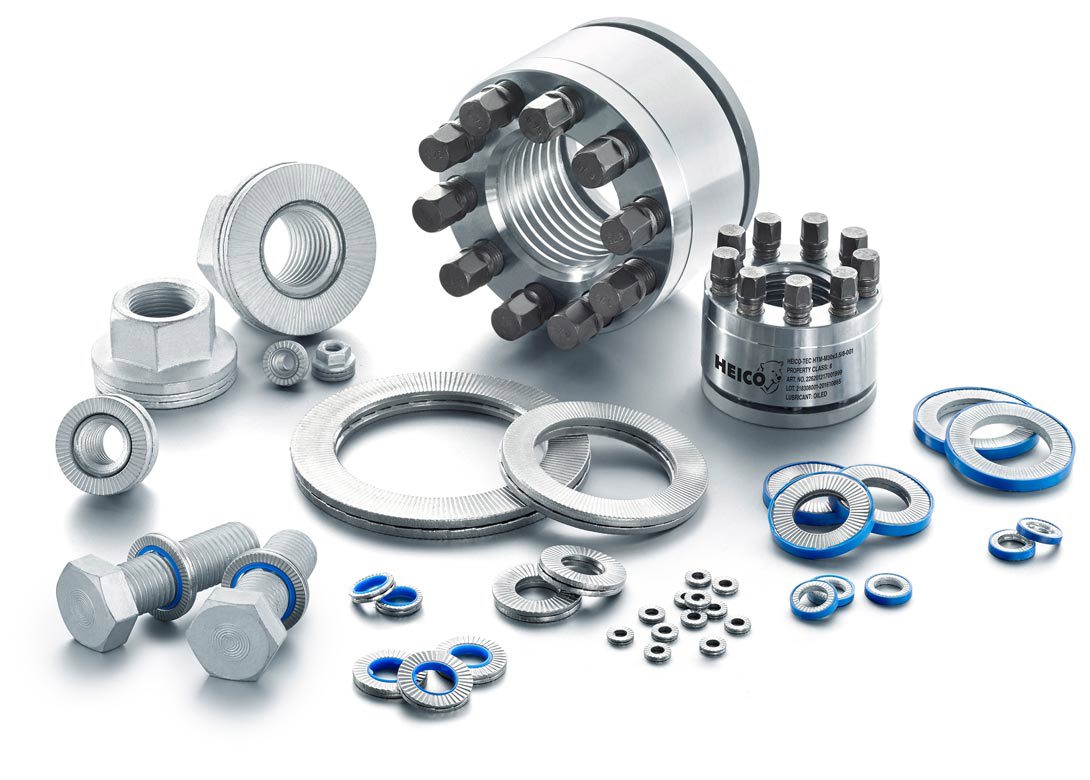
Here HEICO Befestigungstechnik GmbH explains why its HEICO-LOCK® Wedge Lock Washers are the reliable solution for securing bolted joints, in high vibration assemblies, against self-loosening by rotation.
Against the backdrop of optimised construction with less volumes and material inputs, in accordance with the principles of lightweight design, reliable securing methods for fasteners have become ever more critical. With space limitations resulting in smaller clamping lengths, even high strength bolted joints are susceptible to self-loosening. With system operations causing high dynamic shear loads, specifically high vibrations, bolted joints can lose preload by self-rotating, which can lead to system failure or significant danger to life and limb.
HEICO-LOCK® Wedge Lock Washer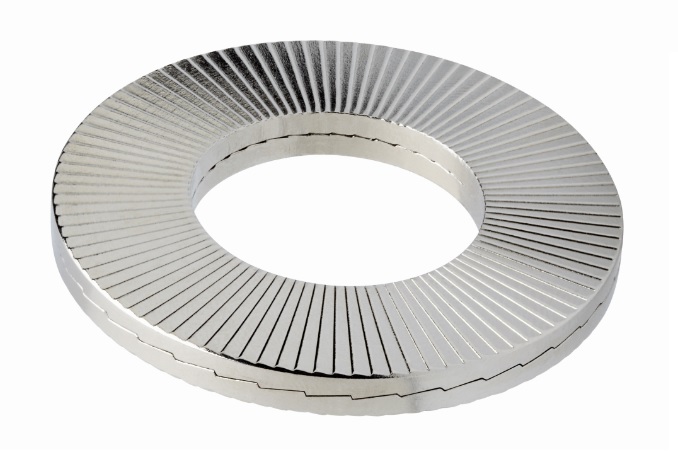
HEICO-LOCK® Wedge Lock Washers prevent bolted joints from self-loosening by rotation even under the most extreme vibrations. HEICO-LOCK® Wedge Lock Systems are used in many fields of applications, because in nearly every industry vibrations and dynamic loads are occurring. Whether the oil and gas, railway, agriculture and forestry, automotive or renewable energy sector, safety and reliability in case of bolted connections are always important.
Since 1900 HEICO has been providing high class fastening solutions. Starting with the production and distribution of upholstery and decorative nails, mainly for the furniture industry, the range of products has extended steadily over the intervening years. In the early 1990s HEICO began manufacturing design-specific cold formed parts and mouldings, mainly for the automotive sector. After passing on the management of the family held company to the fourth generation, the product range was extended significantly by the introduction of HEICO-LOCK Wedge Lock Washers. Today the company has approximately 400 employees across two production plants in Germany and eleven worldwide distribution subsidiaries.
There are a wide variety of bolt locking devices available on the market but unfortunately not all of them meet the basic requirement of reliably preventing bolted joints from self-loosening. The locking performance of fasteners under vibration, specifically locking devices, can be evaluated on a vibration test rig according to DIN 65151 (1) known as the ‘Junker’ test after its inventor, Gerhard H. Junker (2).
The renowned German Institute for Standardisation (DIN) conducted a programme of these ‘Junker’ tests and as a result in 2003 withdrew several standards referring to locking devices. A number of devices were verified as not applicable in preventing high strength bolts from self-loosening, including spring washers (according to DIN 127), toothed lock washers (according to DIN 6797) and locking plates (DIN 93). Locking devices would now be categorised according to their locking performance as either reliable ‘bolt locking’ or ‘loss preventing’ devices.
While reliable ‘bolt locking’ devices prevent self-rotation in the bolted joint during vibration, as well as obtaining high preloads, ‘loss prevention’ devices are only preventing the nut or bolt from falling off after the preload is mostly lost.
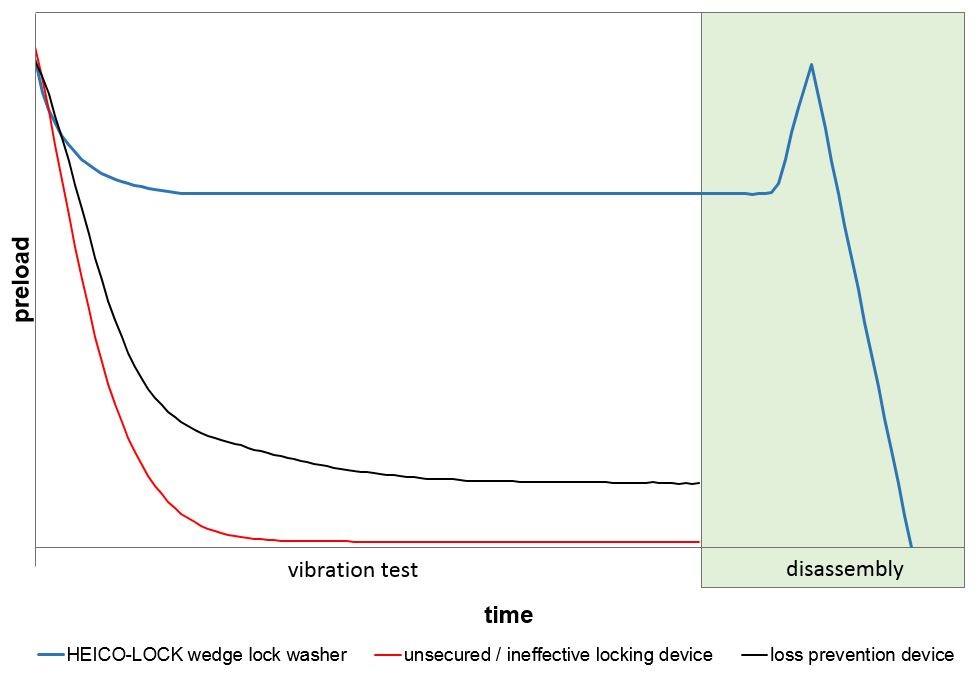
Schematic preload curves of bolt locking devices during the vibration test (Junker test)
An example of a ‘loss prevention’ device is a prevailing torque type nut (DIN 980 and DIN 985). The HEICO-LOCK Wedge Lock Washer is then categorised as a ‘bolt locking’ device. A detailed overview is included in DIN 25201 part 4 in table A1 (3).
In response to these changes a number of surveys were undertaken by independent research institutes to test the ‘bolt locking’ effectiveness of the HEICO-LOCK Wedge Lock Washers. A vibration test rig was used, according to the specifications of DIN 65151 (Junker test), and the tests were undertaken according to the specifications of E DIN 25201 part 4 appendix B (4).
The results of these independent tests showed that the HEICO-LOCK Wedge Lock Washers met the E DIN 25201 requirements of maintaining a residual preload >80% after an alternating transverse load, representing the effects of vibration, of over 2,000 load cycles.
The outstanding locking performance of HEICO-LOCK Wedge Lock Washers is due to their functional principle:

The remarkable property of HEICO-LOCK Wedge Lock Washers is that they positively lock fasteners using tension instead of friction. The HEICO-LOCK® System consists of a pre-assembled pair of glued washers that have inclined cams on the inside and radial teeth/ridges on the opposite sides (the use of the glue is simply to ensure the correct position of the single washers in relation to each other before the first assembly and is not part of the actual functional principle). Tightening of the bolt and/or nut leads to a gripping action of the teeth thus seating the mating surfaces (the surface hardness of the washer is greater than that of structural grade and high-tensile bolts). Tightening locks the HEICO-LOCK Wedge Lock Washers in place (Image A). Due to the low friction between the single washers movement is only possible across the faces of the cams on the inner side (Image B). As the wedge angle of these cams (α) is greater than the angle of the thread pitch (β) any movement of the bolt increases the thickness of the washers as the cams move across each other (Image C). When the bolt rotates in a loosening direction this cam movement increases the preload force and blocks the self-loosening action (Image D).
HEICO has always aspired to innovation and advancement, the very cornerstones that more than 100 years of the company’s history is based upon. In accordance with this philosophy the R&D department works continuously in its in-house laboratory to improve and to develop established bolt locking solutions. Only five years after the launch of the HEICO-LOCK Wedge Lock Washers, this development culminated in the launching of two new products – the HEICO-LOCK® Ring Lock Washer and the HEICO-LOCK® Wedge Lock Nut.
HEICO-LOCK® Ring Lock Washer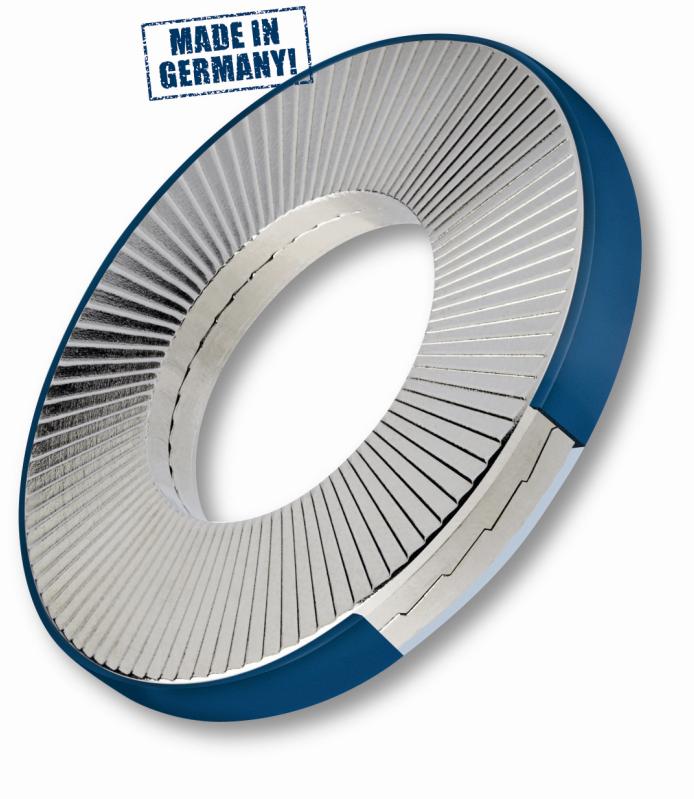
The HEICO-LOCK Ring Lock Washer provides the crucial advantage that even after disassembly of the bolted joint the individual washers are permanently held in the correct position by an outer plastic ring. This design means the combined washers cannot be assembled incorrectly, thus ensuring effective operation even when used by non-specialised operatives.
The HEICO-LOCK Wedge Lock Nuts, a combination of the proven HEICO-LOCK Wedge Lock Washer with a flanged nut, provides a locking solution where the number of parts used during assembly decreases and the need for a separate washer under the head of a nut is removed.
HEICO-LOCK® Wedge Lock Nut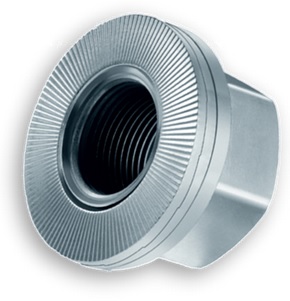
This leads to a more reliable, faster and cost optimised assembly of bolted joints. With the riveting of the connection between the wedge lock washer and flanged nut the one piece design is maintained, even after several assembly/disassembly cycles.
With continual development and innovation at the heart of the HEICO philosophy, the future of bolt locking is in safe hands.
Bibliography
1 DIN 65151: Aerospace series – Dynamic testing of the locking characteristics of fasteners under transverse loading conditions (vibration test). August 2002.
2 JUNKER, G: New Criteria for self-loosening of fasteners under vibration, transactions of the Society of Automotive Engineers, Vol. 78, 1969, pp. 314-335, New York.
3 DIN 25201-4: Design guide for railway vehicles and their components – Bolted joints – Part 4: Securing of bolted joints. June 2004.
4 E DIN 25201-4 Appendix B:Design guide for railway vehicles and their components – Bolted joints – Part 4: Securing of bolted joints – Appendix B. Draft version. March 2010.

Having spent a decade in the fastener industry experiencing every facet – from steel mills, fastener manufacturers, wholesalers, distributors, as well as machinery builders and plating + coating companies, Claire has developed an in-depth knowledge of all things fasteners.
Alongside visiting numerous companies, exhibitions and conferences around the world, Claire has also interviewed high profile figures – focusing on key topics impacting the sector and making sure readers stay up to date with the latest developments within the industry.




